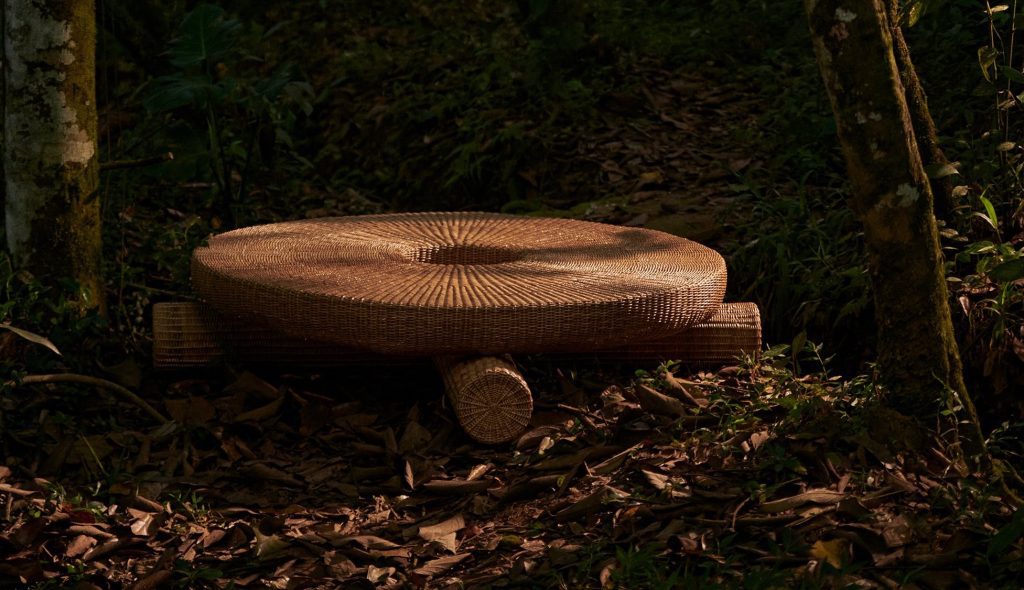

Gábor Góbi: Investigating the Lifecycle of Objects and the Beauty of Deconstruction
Gabor Gobi‘s journey from the visual communication department at the Moholy-Nagy University of Art and Design (MOME) to a groundbreaking role in the advertising industry, and finally to founding his studio, is a testament to the power of conviction and the pursuit of a mission far beyond the conventional. Faced with the undeniable realities of our planet’s limitations, Gobi chose to step away from the perpetuating cycle of consumption and waste, driven by a compelling urge to align his work with his principles. This shift marked the beginning of a quest for sustainable design and fostering an eco-conscious lifestyle that resonates with the essence of responsibility and care for the environment.






At the core of Gabor Gobi‘s practice is a vision where every creation harmonizes with the environment, contributing to a world where sustainability is not an option but a necessity. Gobi’s philosophy of design as a form of search reflects a profound respect for the moment, the material, and its latent potential, guiding his innovative approach to upcycling and the use of natural materials. Through traditional techniques like Yakisugi, Gobi not only preserves wood but also encapsulates the beauty and resilience of nature in every piece, from sculptured furniture to conceptual art objects.
Gobi’s collections are a vivid embodiment of this ethos, inspired by movements such wabi-sabi and slow living, which emphasize the value of simplicity, the acceptance of imperfection, and the importance of a deep connection with the natural world. These objects, each reclaimed from waste, stand as a testament to the cycle of renewal and transformation, embodying Gobi’s vision for a world where design serves as a bridge to a more sustainable, equitable, and thoughtful way of living.
As we delve into the world of Gabor Gobi and explore his creations, we’re invited to reflect on our own relationship with the objects we cherish and the environment we inhabit. It’s a journey that challenges us to reconsider our daily choices, inspiring a shift towards a lifestyle that embraces sustainability not as a burden but as a path to genuine change and a healthier planet for future generations.












At the heart of Gobi’s work is the principle of reclamation—elevating materials to a new level of beauty and function. The Erosion Collection’s N1 Chair showcases this beautifully. Applying the Yakisugi technique to real wood, Gobi preserves the material and highlights its natural allure, making each piece unique. The incorporation of cork for comfort and the finish of natural oil and beeswax emphasize the tactile and aesthetic qualities of the chair, making it a tangible representation of the cycle of life and the beauty of aging.








The Melting Collection, featuring pieces like the Volcano Table Lamp and the Cumulus Black Candle Holder, ignites a conversation on the impact of human actions on the planet. These creations serve as a reminder of the pressing issue of climate change. By choosing materials that are remnants of human consumption, Gobi highlights the urgent need for sustainability in design. The combination of wood and marble in these pieces symbolizes the delicate balance of our ecosystem, urging us to consider our role in its preservation.
Gobi’s choice to source materials from scrapyards and remnants of deconstructed buildings is a bold statement on the value of what is often considered worthless. This approach showcases his creativity and his commitment to reducing waste and promoting more thoughtful consumption. Each piece, crafted from these reclaimed materials, embodies the possibility of a sustainable future where design and environmental stewardship are intertwined.
“Human beings don’t have a pollution problem; they have a design problem. If humans were to devise products, tools, furniture, homes, factories, and cities more intelligently from the start, they wouldn’t even need to think in terms of waste, contamination, or scarcity. Good design would allow for abundance, endless reuse, and pleasure.”
The Upcycle by authors Michael Braungart and William McDonough






The use of traditional techniques such as Yakisugi and Wabi-Sabi connects Gobi’s contemporary work to a broader historical context, demonstrating that the past can inform sustainable practices in the present. These methods imbue materials with new meaning, merging the old with the new in a continuous cycle of innovation.
Gabor Gobi’s work is a compelling exploration of the intersections between design, sustainability, and culture. Through his thoughtful selection of materials, techniques, and forms, he invites us to reconsider our relationship with the objects we use and the materials we often discard. His creations are narratives of transformation, resilience, and hope for a harmonious future. In a world increasingly burdened by waste and environmental degradation, Gobi’s work stands as a crucial reminder of the power of design to effect meaningful change.


Discover the work of Gabor Gobi on Adorno
-
25% off


Block Table Lamp
€590€443 -

 In stock
In stockBruciata Wooden Tray
€89 -
25% off


Cumulus Black Candle Holder
€490€368 -
25% off


Holey Tower Candle Holder
€960€720 -

 In stock
In stockMoon Side Table
€1.190 -
25% off


N1 Chair
€1.690€1.268 -
25% off


Puzzle Table Lamp
€890€668 -

 In stock
In stockTorch Table Lamp
€2.690 -
25% off


Totem Floor Lamp
€2.390€1.793 -
25% off


Tundra Floor Lamp
€3.990€2.993 -
25% off


Volcano Table Lamp
€2.790€2.093











